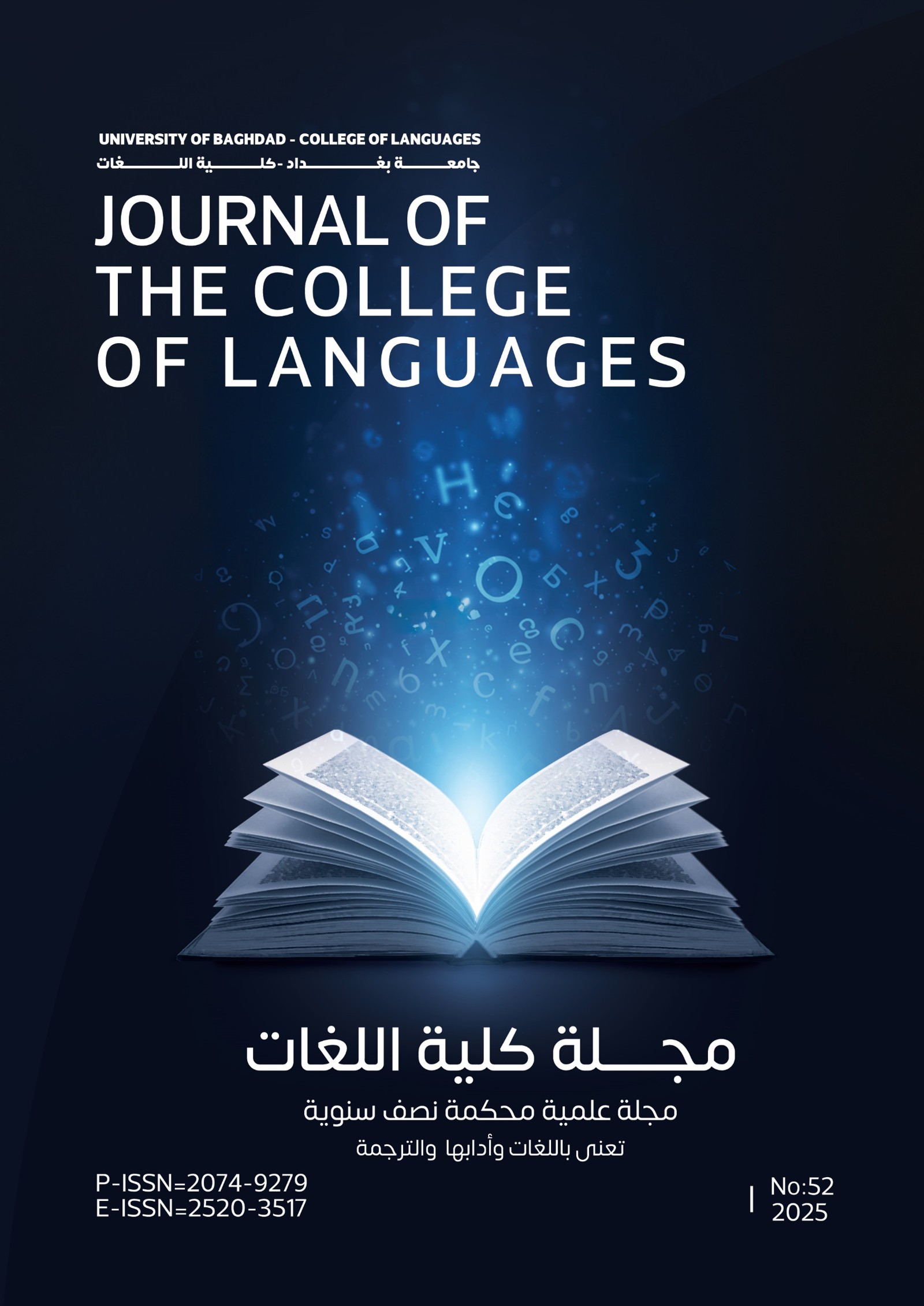Chateaubriand's impressions of the East (the Orient) Study of ''Itinerary from Paris to Jerusalem
Les impressions de Chateaubriand sur l’Orient Étude de ''l’Itinéraire de Paris à Jérusalem''
DOI:
https://doi.org/10.36586/jcl.2.2023.0.48.0096Keywords:
travel literature, Chateaubriand, the journey to the East, impressions, the romantic traveler, littérature de voyage, Chateaubriand, voyage en Orient, les impressions, voyageur romantique.Abstract
The truthfulness and accuracy of the information presented in the itinerary made this work a historical, geographical and tourist guide for travelers of that century, and it represents a clear and distinct literary value for the genre of travel literature.
Chateaubriand's impressions are written in a somewhat descriptive style, descriptions drowning in veneration, it is a painter's style, but they are paintings, arranged in the manner of portraits of martyrs' churches, and were paintings of historical landscapes, while those of his Itinerary of the Journey from Paris to Jerusalem are Pictures or real copies of reality.
Studying Chateaubriand's impressions of the East, one can first note the impressions of admiring the beautiful landscapes, eastern cities and the great monuments of the East.
As a keen pilgrim to visit the holy places, throughout his journey Chateaubriand maintains his religious goal of deepening his faith. And his impressions in this religious atmosphere were confused, as he thinks that he hears the voice of the prophets and see the shadows of the ancients, and the ancient Jerusalem (Jerusalem) rises before him. But Chateaubriand's impressions show us another side of his vision of the East, and that is the vision of the passionate pilgrim who accuses Muslims of cruelty, tyranny and subservience. He politically condemns the shortcomings of Ottoman rule.
The most prominent and widespread impressions in the book are sadness and loneliness. The Orient, with its atmosphere, charm and history, evokes in Chateaubriand a sad pleasure that fits perfectly with the mysterious feeling that surrounds his gloomy soul. But this feeling, which burdens the romantic traveler, is more connected with the author's state of mind than with the Orient itself.
Résumé
La véracité et l'exactitude des informations présentées dans l'Itinéraire de Paris à Jérusalem ont fait de cet ouvrage un guide historique, géographique et touristique pour les voyageurs du siècle, et il représente une valeur littéraire claire et distincte pour le genre de la littérature de voyage. Les impressions de Chateaubriand sont écrites dans un style un peu descriptif, les descriptions noyées dans la vénération, c'est le style d'un peintre, mais ce sont des peintures, disposées à la manière des portraits d'églises des Martyrs, qui étaient des peintures de paysages historiques, tandis que celles de son Itinéraire de Voyage de Paris à Jérusalem sont des Images ou de vraies copies de la réalité. En étudiant les impressions d'Orient de Chateaubriand, on peut d'abord noter l'impression d'admiration pour les beaux paysages, les villes orientales et les grands monuments d'Orient. En pèlerin avide de visiter les lieux saints, Chateaubriand maintient tout au long de son parcours son objectif religieux d'approfondir sa foi. Dans cette atmosphère religieuse, ses impressions sont confuses, car il croit entendre la voix des prophètes et voir les ombres des anciens. Mais les impressions de Chateaubriand nous montrent un autre aspect de sa vision de l'Orient, c'est la vision du pèlerin passionné qui accuse les musulmans de cruauté, de despotisme et de servilité. Il condamne politiquement les lacunes de la domination ottomane. Les impressions les plus marquantes et les plus répandues dans le livre sont la tristesse et la solitude. L'Orient par son atmosphère, son charme et son histoire provoque chez Chateaubriand un triste plaisir qui convient parfaitement avec la vague sensation enveloppant son âme mélancolique. Mais ce sentiment, qui pèse lourdement sur le voyageur romantique, est plus lié à l'état d'âme de l'auteur qu’à l’Orient lui-même.
References
Aureau, B. (1998). Chateaubriand.ADPF publications.Paris.
Berchet, J.C. (1985). The journey to the Orient: an anthology of French travelers in the Levant in the 19th century. R. Laffont. Paris.
Chateaubriand, F. R. D. (1921).Chateaubriand excerpts published with an introduction of notices and notes: by Fernand Brunetière and Victor Giraud. Hachette, Paris.
Chateaubriand, F. R. D (1962). Atala and Réne, Garnier Frères. Paris.
Chateaubriand, F. R. D (1964). Itinerary from Paris to Jerusalem. Julliard. Paris.
Chateaubriand, F. R. D (1971). Atala, René, The Adventures of the Last Abencerage, preface by Pierre Moreau. Gallimard. Paris.
Nerval, G.D. (1956). Journey to the East. Vol.II. Library of the Pleiade. Gallimard.Paris.
Requemora, S. (2002). "Space in Travel Literature". Literary Studies, 34(1-2), 249–276. https://doi.org/10.7202/007566ar
Downloads
Published
Issue
Section
License
Copyright (c) 2023 Journal of the College of Languages (JCL)

This work is licensed under a Creative Commons Attribution 4.0 International License.








